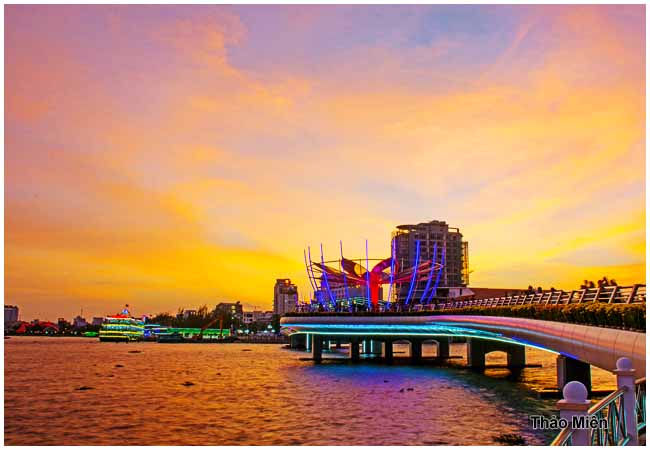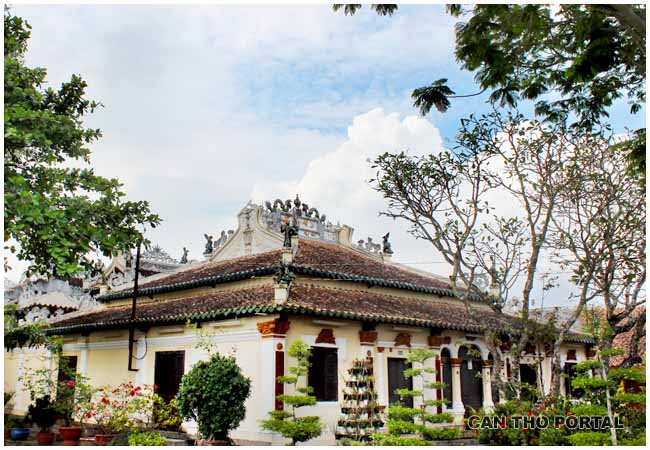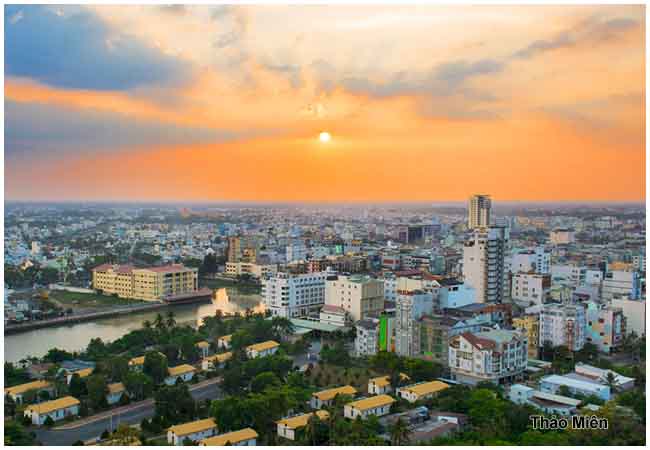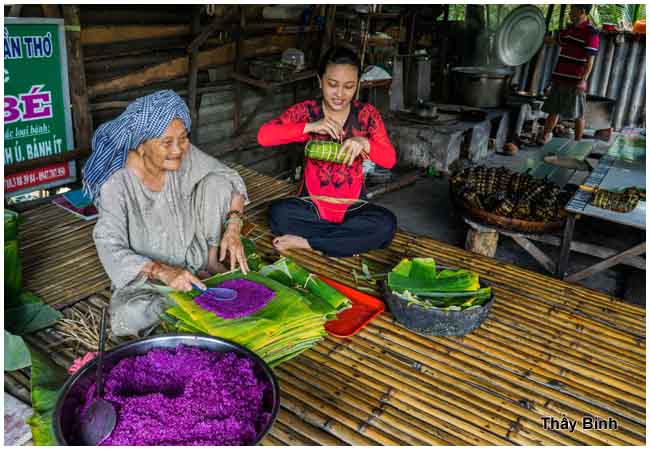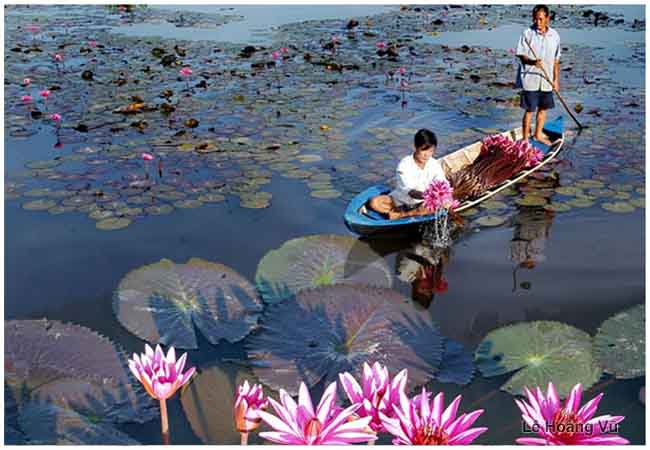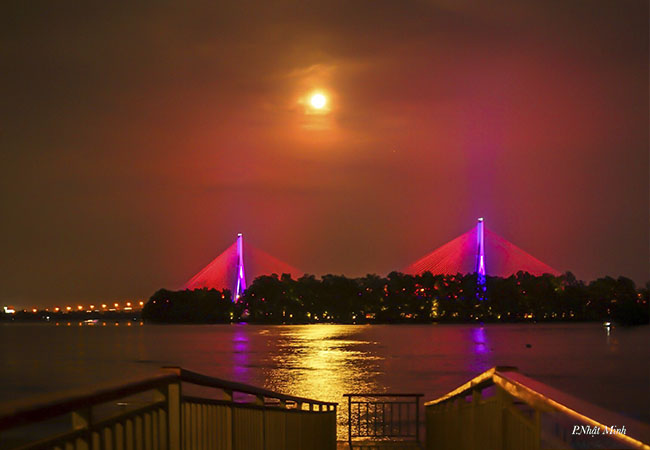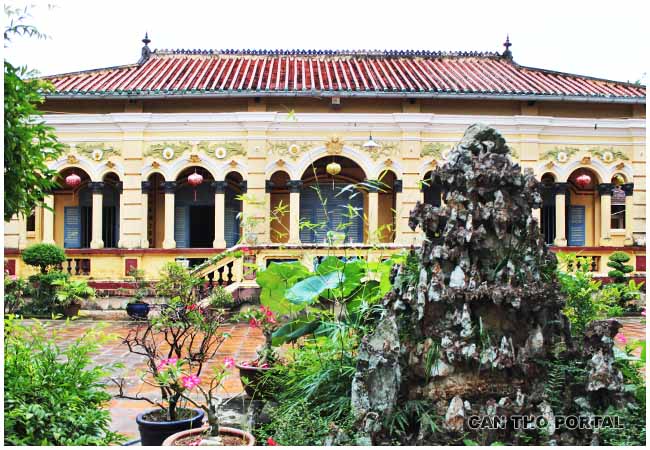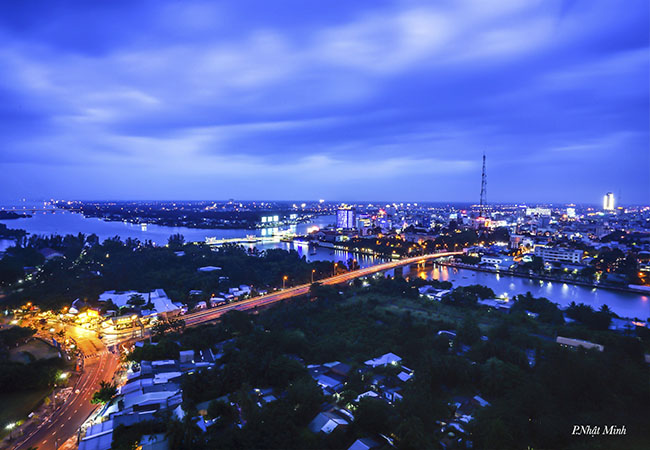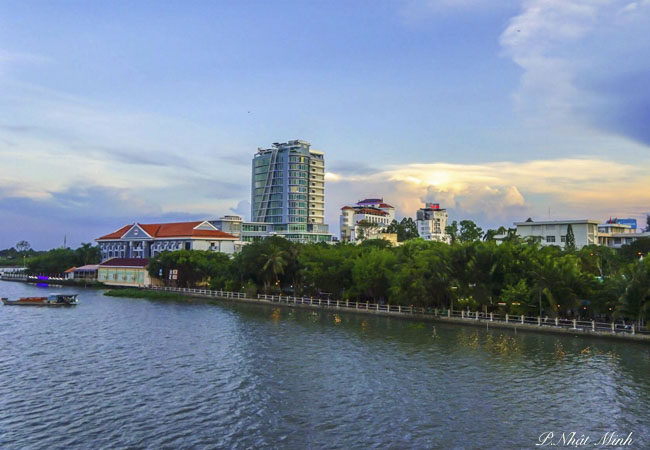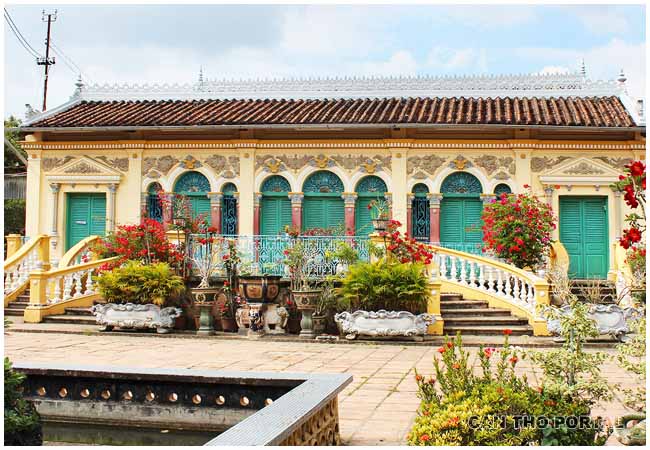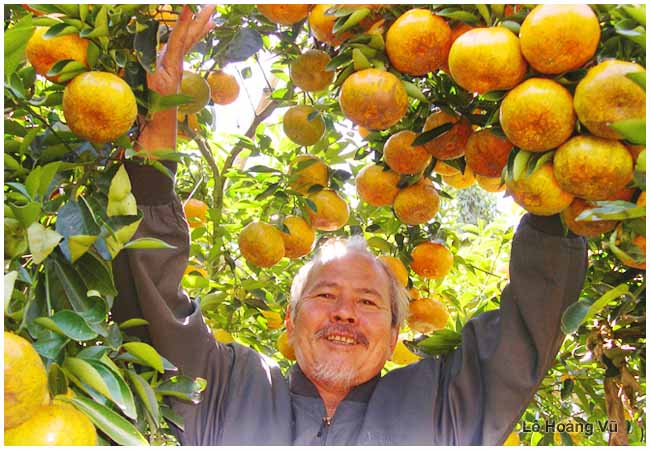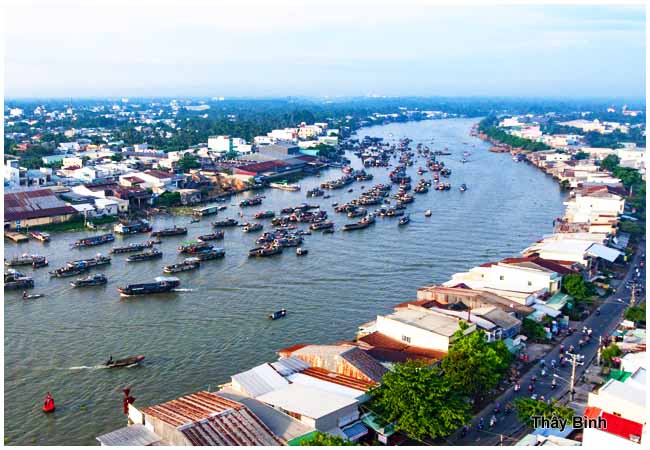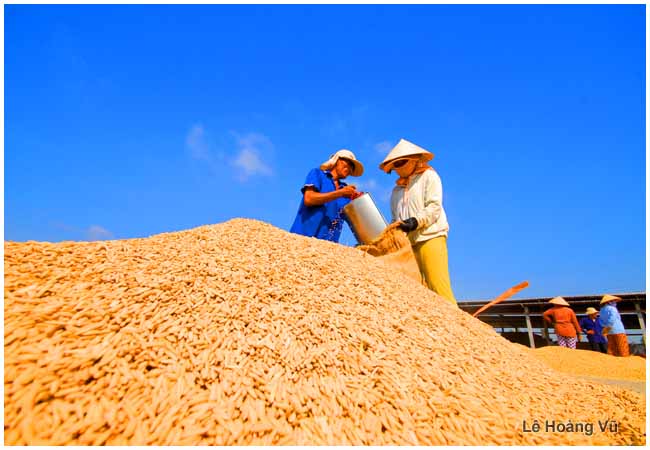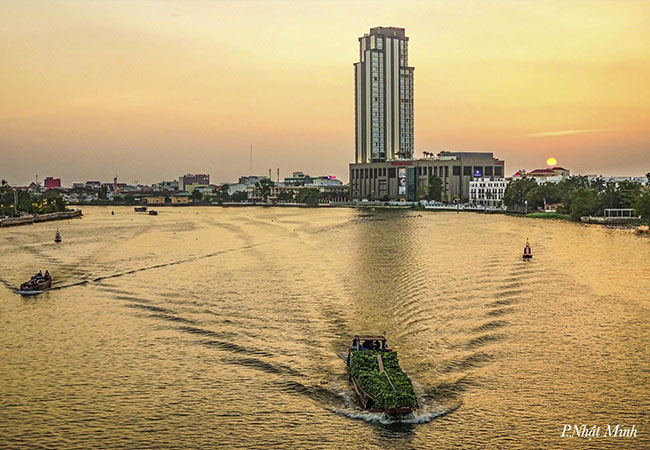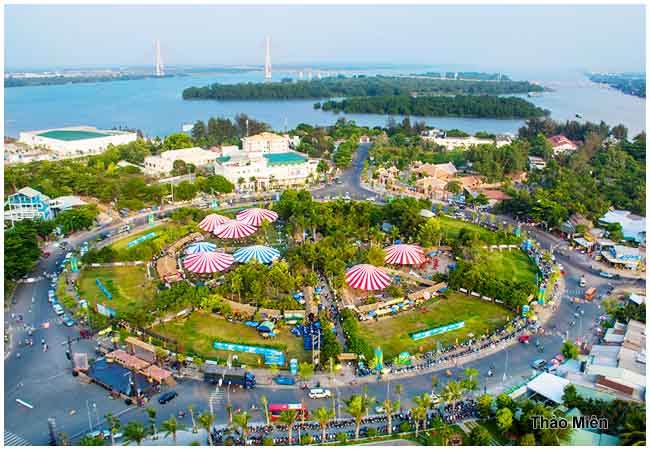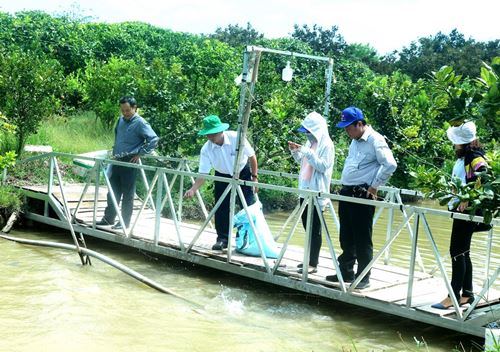
From Highway 91, through Thuan Hung ferry, Tan Loc Isle appears with the green color of orchards, each gust of cool wind brings relaxed and comfortable feeling.
Tan Loc is located at the border of three provinces of Dong Thap, An Giang and Can Tho. It was the strip of land on Hau River emerging from the sedimentation of alluvial sand from the Mekong River upstream. Therefore, the isle is also known as Sa Chau (Sandy Isle). At the beginning, there was nothing but reeds, then people came to reclaim and they mainly lived on catching mussels, snails, bung bung chang chang (also known as river clam with beautiful nacre shell - a specialty of Tan Loc Islet). Tan Loc Isle also has many names associated with each development process of the isle. In the years of 1970s-1980s, growing sugarcane and making sugar were well-developed occupations on the isle. During a visit to this charming land, composer Pham Tuyen has composed the song "Que ta co hon dao ngot" (the sweet island in our homeland). Then, the name "sweet island" came into being. Afterwards, when local people started raft-based fish farming, the isle then was named "fish village". Today, Tan Loc Isle is more than 3,200 hectares wide with fertile alluvial soil facilitating the development of many orchards alongside with doing tourism.
One of the places that we cannot miss when coming to the isle is the 4.000m2 guava orchard of Mrs. Le Hong Diep, planted with clean technology. Therefore, the fully ripe guavas here are very sweet and clean. Follow the small paths, guests can pick guavas and enjoy them on the spot. Mrs Diep said: "The fruit has been wrapped since it is still small, so guests can remove the plastic wrap and eat it. Because I myself grow guava without using chemicals”.
Most gardeners on the isle are careful in wrapping fruit. Alluvium soil is so nutritious that the fruit here is always delicious and sweet. A few kilometers away from Mrs. Diep's house is the orchard of Mr. Do Trung Ngon who also starts doing tourism in April this year. Mr. Ngon’s orchard is more than 3 hectares, with many kinds of fruit trees such as orange, rambutan, langsat and so on. Particularly, fish ponds along the orchard are very large for tourists to fish and swim. With rambutan is the main fruit tree, Mr. Do Trung Ngon's orchard is ripe in May and June right on the occasion of the Tan Loc Fruit Garden Festival. At present, visitors can visit orange orchard, go fishing, go rowing or feed the fish. Meanwhile, the coconut orchard of Mr. Le Tan Nhuong makes visitors feel like getting lost in the "coconuts kingdom" of Ben Tre with straight lines of coconuts, leaning along the canal. The coconut orchard covers an area of 7.5 hectares, with 550 coconut trees of all varieties namely Siamese coconut, “fire” coconut, pineapple coconut (sweet milk, fresh fragrance) and the like. After an excursion tour around the isle, visitors can enjoy the most of the fresh air on hammocks and sweet coconut milk. These canals were dug interposingly with coconut trees; tourists can row boats leisurely around for sightseeing, and take photos in pleasure.

Sightseeing and rowing boat experience in the coconut orchard of Mr. Le Tan Nhuong. Photo: Ai Lam
Another fascinating experience in the isle is exploring the ancient house system. Tan Loc Isle has 12 ancient houses, but only a few of them are still intact. Following the locals, we arrived at the house of Mr. Tran Ba The, often called Mr. Sau The (Tan An Area, Tan Loc Ward). At the age of 94, Mr. Sau The who is still in good health, warmly welcomes us with stories about the origin of the rare ancient house which is still intact over the years. The house was built by Mr. Tran Thien Thoai (Long Xuyen) – father of Mr. Tran Ba The and completed in 1935. Through generations, the house’s architecture, the shape, paint colors and furniture are still reserved. The house has East-West architectural style with three compartments and two lean-tos with square shape. The whole house was built with two layers of brick to create a cool space. The facade was built in the Western style with sophisticated patterned columns. Showing us the Chinese board hanging at the main compartment of the house, Mr. Sau The explained that the board has the name of the owner Tran Thien Thoai. In contrast, in the exit direction there is the Chinese board signifying Manners with the desire to always create comfortable, relaxing mind for people who live in or visit the house. The compartment for worshiping ancestors is set in order: ancestors in the center, grandparents on the left, and parents on the right. In addition, Mr. Sau The also keeps the "family tree" with ten generations of both his father’s and mother’s sides. His house is like a miniature "antiques museum": late 19th-century Chinese wooden style lanterns on the ceiling, incandescent lamps, oil lamp of the United States in the early years of the 20th century, sophisticatedly carved tables, chairs, dishes, vases... Stepping into the yard, you can feel the charming beauty of the ancient garden: over 200-year-old axlewood tree, over 50-year-old line of starfruit trees… Behind the house is a large lake suitable for tourists to relax or go fishing in pleasure.
In addition to the ancient house of Mr. Sau The, there are other ancient houses of Mr. Nguyen Van Ti, Mr. Nguyen Van Thi, Mr. Huynh Quang Que in here .... Each house is unique in its own; only witnessing them with your own eyes can you feel all the ancient features, the strange attraction of these buildings. Through stories told by the owners, you will understand the culture and lifestyle of the old South better.
Visiting the isle, especially in the fruit season, visitors can enjoy the special fruit here such as mango, plum, rambutan, longan, guava ... Pick the fruit you can reach only by hand and enjoy the peaceful space of the village with fresh air.
Source: Can Tho Newspaper - Translated by Hoang Dat





